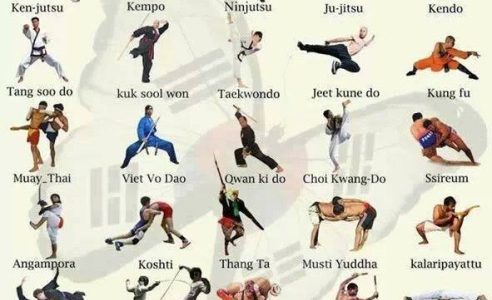Exploring The Differences In Between Standard Martial Arts And Contemporary Fight Sports
Exploring The Differences In Between Standard Martial Arts And Contemporary Fight Sports
Blog Article
Material Create By-Ware Sexton
When you consider martial arts, do you lean more towards the typical techniques or the modern combat sports? Each path provides unique benefits and experiences, shaped by their approaches and training techniques. Traditional martial arts emphasize individual growth and self-control, while contemporary combat sporting activities focus on competition and efficiency. Comprehending these differences can lead you in selecting the best method for your journey. However exactly how do these distinctions manifest in training and philosophy?
The Philosophy and Background Behind Traditional Martial arts
While many people link martial arts with physical fight, the approach and background behind typical martial arts run much deeper. You'll discover that these self-controls highlight personal growth, technique, and respect.
Originating from old methods, typical martial arts were usually created for Self-Defense and spiritual advancement. They symbolize principles such as equilibrium, consistency, and self-control, leading practitioners beyond simple fighting abilities.
As you educate, you'll not just discover methods yet also gain insights into the culture and worths that formed these arts. The rituals and traditions, often given with generations, cultivate a sense of community and belonging.
The Competitive Nature of Modern Combat Sports
Modern combat sporting activities have actually transformed the landscape of martial arts right into an extremely competitive sector, where athletes face off in an examination of ability, method, and endurance.
You'll see that competitors are commonly arranged with rigorous rules and regulations, ensuring fair game and security. These occasions attract big target markets, sustaining the enjoyment and strength of matchups.
Professional athletes educate rigorously, not just for physical prowess but also for mental durability, understanding that every detail counts in the ring. The adrenaline thrill during competitions is apparent, as competitors push their limitations to assert success.
Followers value the athleticism and creativity included, making modern-day fight sporting activities a thrilling phenomenon that remains to develop and astound fanatics all over the world.
Training Techniques and Techniques: A Relative Analysis
The affordable ambience of modern-day combat sports needs innovative training methods that vary considerably from conventional martial arts.
In modern-day training, you'll concentrate on details strategies, sparring, and conditioning, typically using drills that imitate genuine battle scenarios. read page 'll see a focus on measurable performance and frequent competition to examine your skills.
On the other hand, standard martial arts prioritize types, katas, and thoughtful trainings, typically highlighting discipline and respect over competition.
Training is generally less extreme and might include recurring method rather than real-time sparring.
While both strategies develop skill and fitness, modern battle sporting activities offer an extra dynamic and versatile training atmosphere, preparing you for immediate challenges in the ring or cage.
Select the path that aligns with your objectives and passions.
Conclusion
In selecting between traditional martial arts and modern combat sporting activities, it actually comes down to what you value many. If https://www.thepinelog.com/gallery/collection_98457e6a-9993-11ec-81f6-93cd77012a07.html seeking personal growth, technique, and a sense of neighborhood, conventional arts could be your best fit. However if you thrive on competitors and real-time obstacles, contemporary battle sporting activities could be the way to go. Eventually, both courses supply special benefits, so it's all about aligning your training with your individual objectives and passions.
